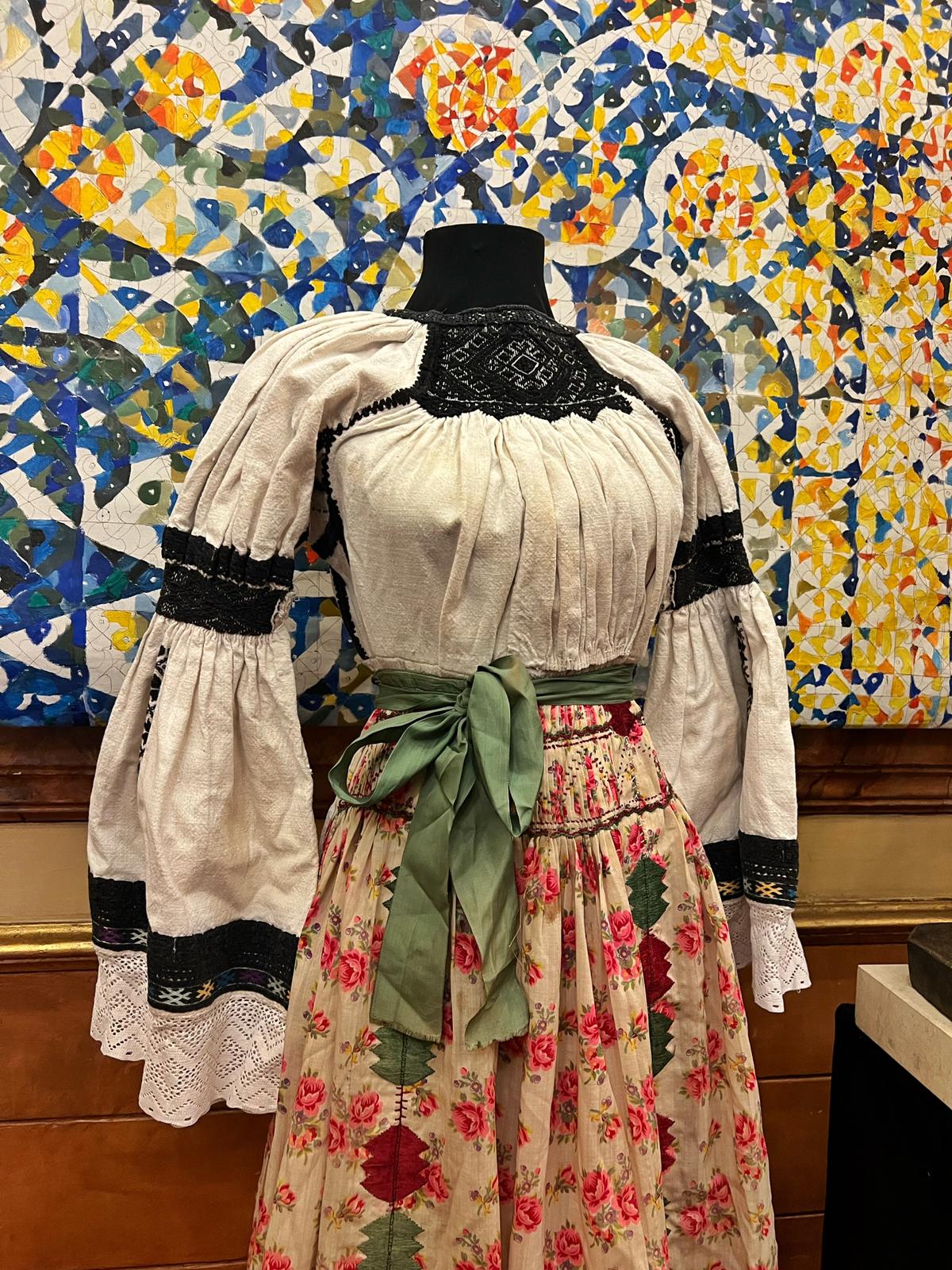
The largest collection of folk costumes, which can only be found in museums or rare exhibitions, as well as around 200 pieces of traditional art and antiques will be auctioned in 2 days, on Wednesday 16 November.
Popular costumes in the traditional art and antiques auction come from the collection of Ana-Maria Crisan and have starting prices between €500 and €100. The most valuable costume is considered a museum exhibit and consists of, for example, the katrinza and valnitsa worn by the Bulgarian minorities from Old Dudesti in Banat. The suit was made at the beginning of the 20th century and has a starting price of 500 euros. A vintage traditional five-piece suit dating back to 1903 also makes an impressive appearance. An exceptional ensemble of clothes is worn only by brides from the town of Viskri in Transylvania. This is a special collection, thanks to the balanced chromatic unity and temporal unity of the parts and the dating of the front apron, with the monogram and the year, but also thanks to the presence of anthropomorphic motifs, the bride and groom at the wedding, in the motifs of the perimeter lace. The suit, which starts at €500, comes with a set of silk and cotton accessories. An ensemble of vintage popular port wine in a Hungarian version of the suit has a starting price of €300 at auction on Wednesday. The exceptional specimen is a collection of clothing from the Mergu district, Cluj, and dates back to the 1930s and 1940s. Maramur suits are also irreplaceable, and at a starting price of 250 euros, a popular suit consisting of four parts is put up for auction: a scarf, a shirt with attached lapels, two long and wide backs. Expert Collecting was created in the 1920s and 1930s.
Romanian folk costumes are complemented by a special selection of antiques – symbols of great empires. An example can be the Ottoman gilded bronze helmet, which was made in the neighboring provinces of the empire. The museum piece, made in the 19th century to be worn in military parades, has a starting price of 2,000 euros. From a decorative point of view, the helmet is atypical, it does not display classical Ottoman decorations, but has an ornamental register executed in writing in Arabic letters, but in a dialect of the minority language, not Turkish (Ottoman).
The first appearance on the Romanian art market, but also the most valuable item of the auction, is an impressive khanjar dagger. An extremely rare product with an all-white jade handle and engraved gold blade, made in the late 18th – early 19th century. The dagger belongs to the Indian Empire of the Great Mughals and has a starting price of 5,000 euros. At the same time, an Ottoman sword with a silver hilt and scabbard, made in the blacksmith technique and decorated with red coral cabochons, is for sale at a starting price of 3,500 euros. The scimitar blade, made at the beginning of the 19th century, is inlaid with floral and geometric silver decor. Another example of an Ottoman scimitar dated 1271 (from the Hijra, i.e. 1854), made of steel, brass and horn, has a starting price of only €600.
About 200 exhibits from the auction of traditional art and antiquities are on display in the Chesianu-Rakovica Palace. Admission is free and the exhibition is open from 10:00 a.m. to 8:00 p.m. Monday through Sunday. The auction on Wednesday, November 16 will take place from 19:00 in Artmark’s Casa A10 auction room, as well as online on the Artmark Live 2.0 platform.
The largest collection of folk costumes in the Česianu-Rakovice Palace:

Article supported by A10 by Artmark
Anna White is a journalist at 247 News Reel, where she writes on world news and current events. She is known for her insightful analysis and compelling storytelling. Anna’s articles have been widely read and shared, earning her a reputation as a talented and respected journalist. She delivers in-depth and accurate understanding of the world’s most pressing issues.